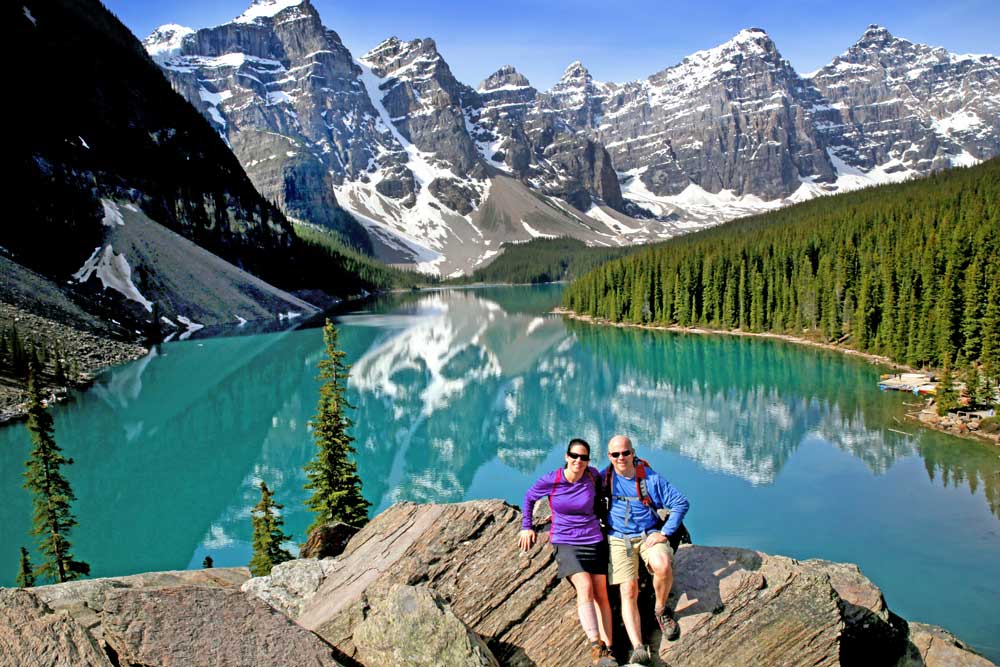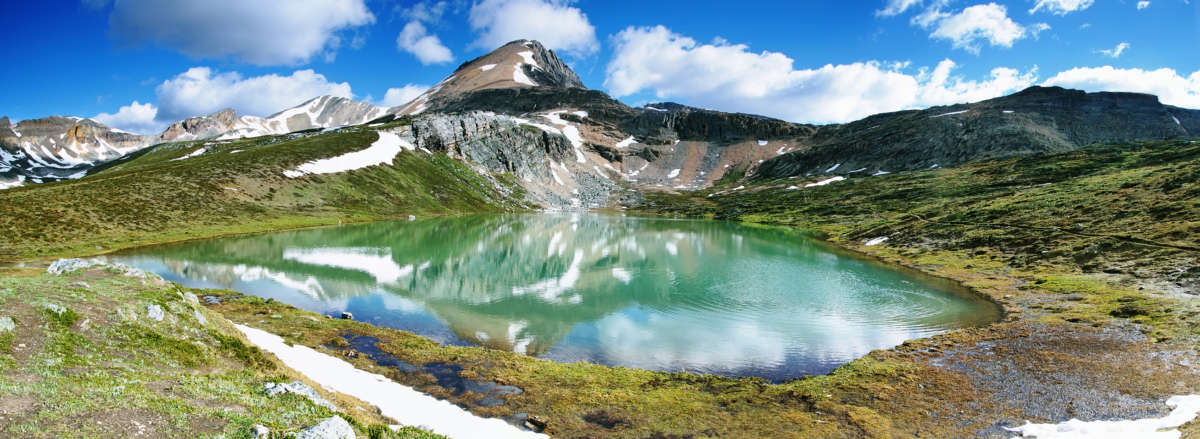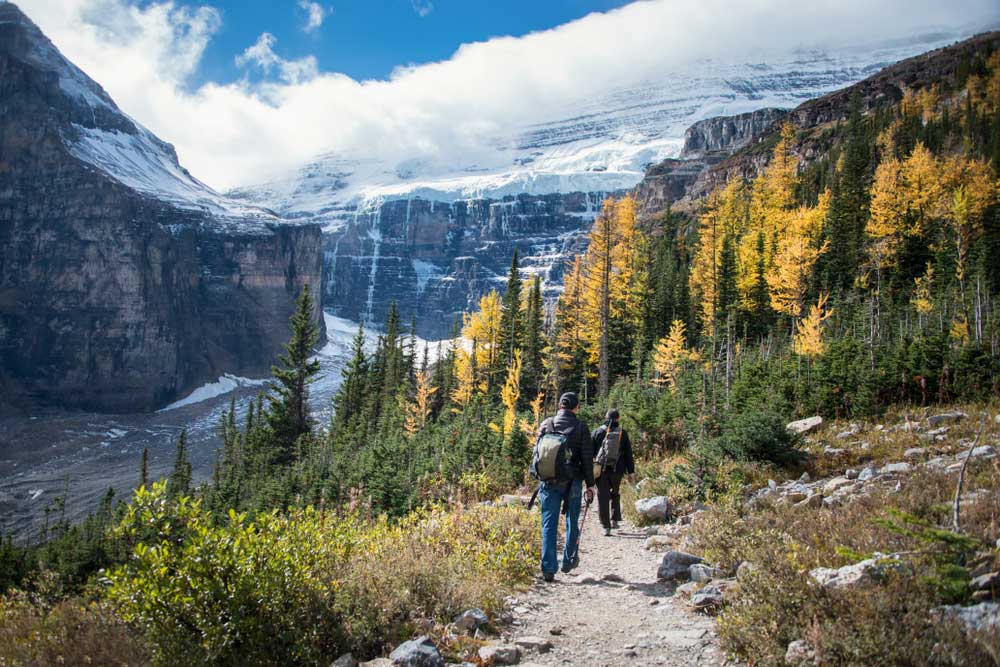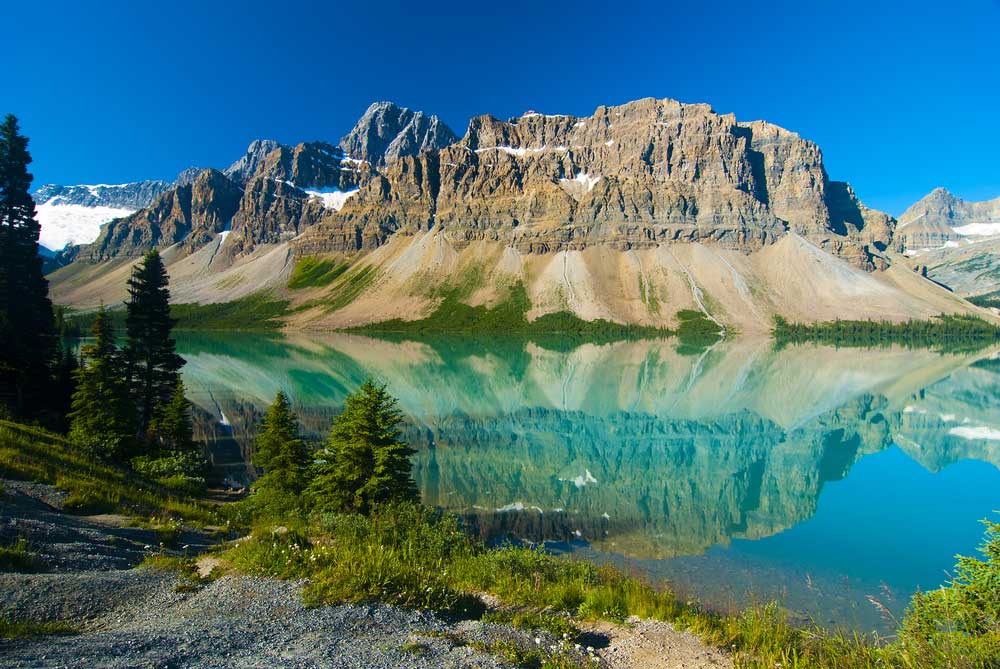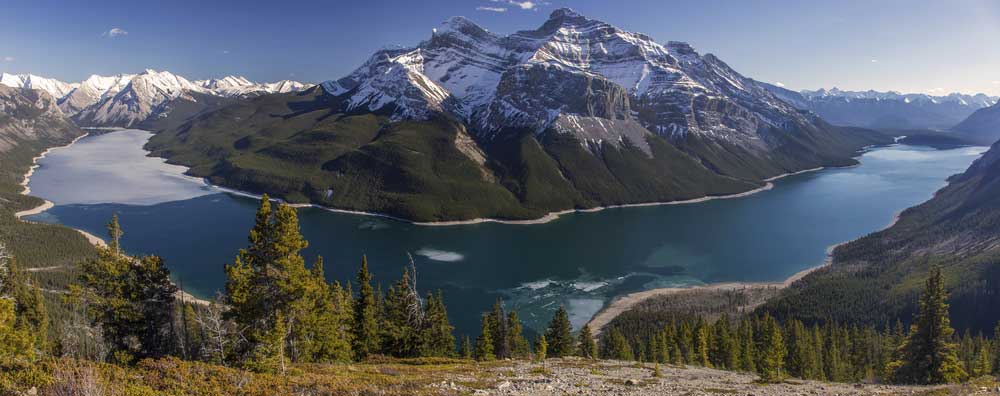Banff National Park in the Canadian Rockies is a hiker's paradise. Backroads offers some spectacular hiking trips in the region—walking and hiking through Banff, Yoho and Kootenay National Parks and beyond. Whether you're joining us for an epic Backroads adventure or exploring this stunning landscape on your own, here are our top five, not-to-be-missed hikes in Banff. Time to tie up our boots and get going!
1. Valley of the Ten Peaks
Area: Lake Louise, Banff National Park; Round-Trip Distance: 5 Miles
After a morning coffee, it's time to make the trek up to the sunny shores of Moraine Lake. You'll work for your picnic up in the Valley of the Ten Peaks, but it's more than worth it. This is my go-to hike to wow visiting friends and family with the grandeur that is Banff National Park. The ascent, scented by the sweet fragrance of sappy Douglas fir and crisp mountain air, is the perfect place to share stories along the trail. Because once you step out into the open and see sweeping vistas of ten peaks standing sentinel, you'll no longer be able to speak. And if you come in the fall, well, you've likely never seen anything like the golden larches in this valley.
2. Helen Lake
Area: Icefields Parkway, Banff National Park; Round-Trip Distance: 7.5 Miles
Helen Lake is world-famous for its kaleidoscope of alpine wildflowers. Well, that and the grizzly activity that often shuts down the trail to human visitors. After an initial climb through subalpine forest, you'll find yourself in one of the most breathtakingly beautiful meadows on the continent, carpeted in a thick blanket of wildflowers. Generally the palette is at its finest in mid-July.
3. Plain of Six Glaciers
Area: Lake Louise, Banff National Park; Round-Trip Distance: 6 Miles
If you like tea with your trails, this is the choice for you. Begin your adventure at lovely Lake Louise, a World Heritage site sitting at 5,700 feet. A 1,200-foot climb by the base of magnificent Mount Victoria will bring you to a cozy cabin nestled high above the lake. Built in 1924 by Swiss Guides, it still serves delicious fare for those willing to work for it.
4. Bow Lake
Area: Icefields Parkway, Banff National Park; Round-Trip Distance: 3 Miles
This short hike winds along the shore of the impossibly blue Bow Lake, the source of Calgary's pristine drinking water and subject of some of the best photographs on the planet. Beginning just behind the octagonal and historic Num-Ti-Jah hunting lodge, this gentle route is a great place to stretch your legs after gaping at awe-inspiring views along the Icefields Parkway.
5. Aylmer Pass
Area: Lake Minnewanka, Banff National Park; Round-Trip Distance: 16 Miles
One of the first high-elevation trails to be free of snow in early summer (yes, this is a serious consideration in Banff National Park), Aylmer Pass is easily accessed from the town of Banff. Taking you high above the crystalline waters of Lake Minnewanka, the trail ascends into the front ranges of the Canadian Rockies to a spectacular 7,500-foot alpine pass. Banff is the place to be.
Want to Experience the Best of Banff with Backroads? Pick one of these Banff Active Adventures and let's go!





